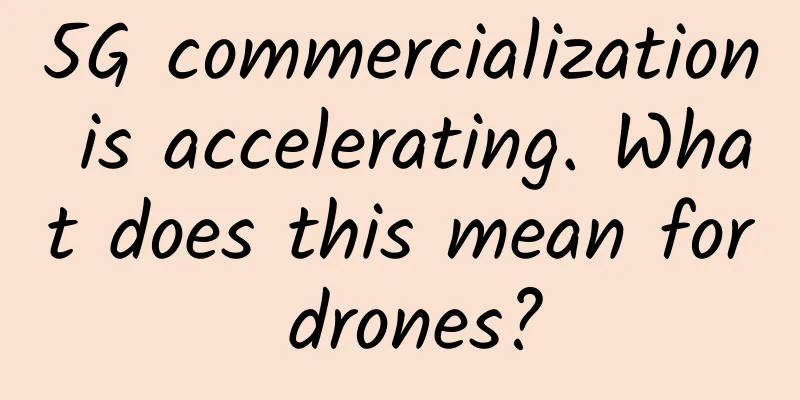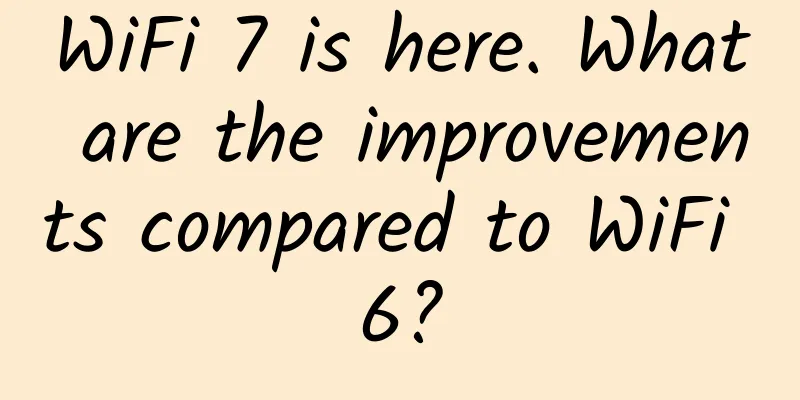5G commercialization is accelerating. What does this mean for drones?

|
Since the beginning of this year, my country's 5G development has been accelerated, and 5G construction in various places has achieved its established goals, which has accelerated the pace of 5G commercialization. According to the latest data from the Ministry of Industry and Information Technology, as of October, my country has built more than 600,000 5G base stations, with more than 100 million 5G users, and 5G network coverage has basically achieved good results.
In this context, the value and impact of 5G commercial use are constantly expanding. As one of the important landing areas, the drone industry will also be significantly affected! So, what is the specific impact? Smart Manufacturing Network believes that in recent years, my country's drones have achieved very rapid development. 5G commercial use will mainly bring the following three aspects of promotion: 1. Deepen application scenarios As we all know, 5G has the value of high-speed, low-latency, and large-capacity communication, which can improve the efficiency and security of data transmission. Faster and safer communication is a key to the upgrade of drone functions. Based on this, the continuous acceleration of 5G commercial construction can promote the improvement of drone functions and deepen their applications. On the one hand, with the support of 5G technology, the scenarios in which drones can be deployed will become more diverse, and the application effects and value will be further deepened. On the other hand, as one of the application fields of drones, the expansion of the 5G industry will also drive the increase in demand for drones, thus significantly promoting the application of drones. In addition, the acceleration of 5G commercialization is also expected to give rise to more new applications for drones. 2. Accelerate market transformation At present, civil drones are the mainstream of the drone market. The opening of the consumer and industrial doors has promoted the rapid development of civil drones. But specifically, the consumer-grade applications within the civil drone market have basically taken shape and the development has begun to show a saturated state. Against this background, industrial drone applications are in a new trend. The so-called industrial-grade drone applications include logistics, security, inspection, plant protection and many other fields, which have extremely high requirements for drone network communication. In the past, 4G networks had serious deficiencies in bandwidth, latency and interference coordination, so it was difficult for industrial-grade drone applications to catch up with consumer-grade ones, but the emergence of 5G has opened up the situation. Compared with traditional 4G networks, 5G has the advantages of high speed, low latency, and large capacity. At the same time, the base stations are built more and more densely, and the network coverage is more comprehensive and complete. Therefore, 5G can enable drones to break through the limitations of the 4G era and make industrial applications more efficient, stable, and safer. The acceleration of 5G commercialization will accelerate the transformation of drones. 3. Enhanced security There have always been two major criticisms of drone applications: the high price and the frequent safety issues. Regarding the second point, there have been numerous incidents of unauthorized flights causing disruption to flights, stealing secrets, and injuring people, which have attracted widespread attention at home and abroad. In this context, the industry has been seeking effective solutions. At present, the generally accepted and effective countermeasures are legal supervision and technical prevention. Legal supervision is to issue relevant legal norms and industry standards to build a legal fence and regulatory network for drones. Technical prevention is to use cutting-edge technology to strengthen the safety defects of drone applications and use technology to prevent drone safety risks. Based on this, the accelerated pace of 5G commercialization will bring good news to drone technology prevention. With the characteristics of 5G technology, it can reduce the signal interference to drones, and at the same time greatly improve the latency and accuracy of data transmission, which can effectively ensure the flight safety of drones themselves. On the other hand, 5G can also help improve the regulatory network. |
>>: What are the obstacles to number portability?
Recommend
OneTechCloud: 25.2 yuan/month KVM-1GB/20G SSD/5M unlimited traffic/Hong Kong CN2
OneTechCloud is a Chinese hosting company establi...
On the day of the Chinese college entrance examination, most of the Internet in the world was paralyzed by this "small company"
On June 8, while the college entrance examination...
5G paves the way for the 14th Five-Year Plan and sets sail for a new era of digital economy
The year 2020 has multiple "identities"...
Network management benefits! Several difficult problems and solutions for LAN
As a qualified network administrator, I believe t...
Understand 5G in one article: Will it subvert the sky-high living costs?
When we were still accustomed to browsing the web...
edgeNAT: 48 yuan/month KVM-2GB/20G SSD/2M unlimited/Korea & Hong Kong
edgeNAT is a Chinese VPS hosting company establis...
The greater development of 5G lies in industrial applications
[[181724]] Some people say that 4G has changed ou...
Picture | Someone finally explains 5G clearly...
The lives of our generation are changing so fast....
In 6 years, the staff has gone from novices to experts. The informatization of the China National Museum of Ethnic Minorities is so trendy!
[51CTO.com original article] Whenever people ment...
5G meets WiFi on a narrow road, walking hand in hand in a friendly way
Recently, both domestic and foreign operators hav...
What are the benefits of restarting a wireless router? Faster Internet access!
Wireless routers have become an indispensable net...
Understanding the differences between 5G and Gigabit LTE
5G is coming, at least some carriers think so. Bu...
V5.NET Spring Promotion: Hong Kong Server 45% off, 292 yuan/month-E5-2630L/16GB/480G SSD/30M bandwidth
V5 Server (V5.NET) is carrying out a spring busin...
Riverbed helps leading manufacturing company Interplex successfully use robotics technology at its global sites
Riverbed, the Application Performance Company, to...
Let’s talk about 5G positioning technology
[[350699]] This article is reprinted from the WeC...









